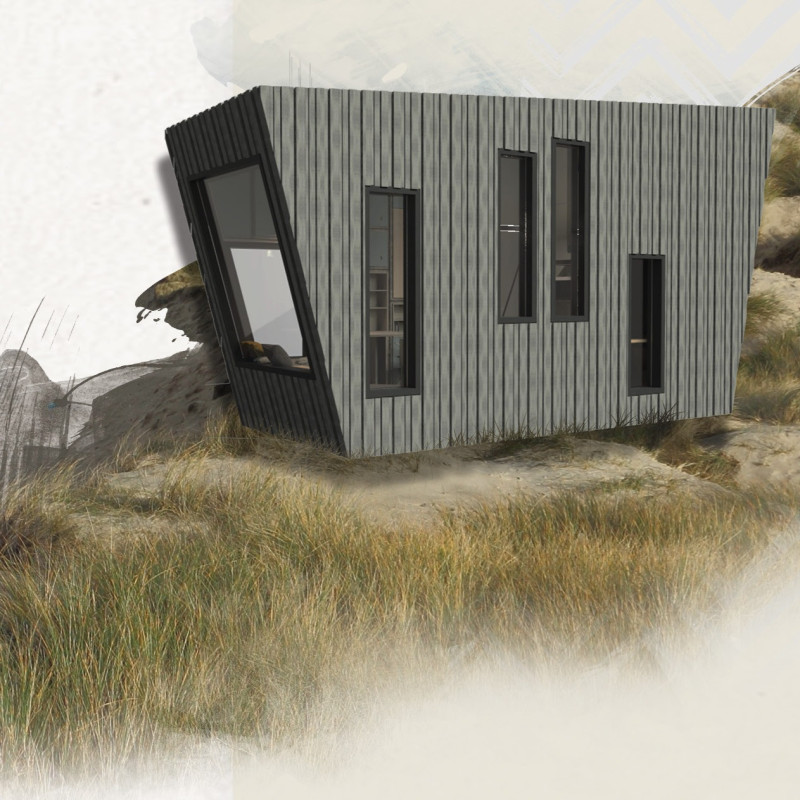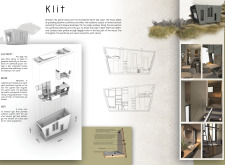5 key facts about this project
The architecture of Klit features a minimalist aesthetic with a focus on natural materials. Its construction primarily utilizes treated wood, glass, and concrete, each chosen for durability and environmental performance. The use of large glass panes facilitates an abundance of natural light, creating an open atmosphere while simultaneously offering panoramic views of the coastline.
The project's functionality is central to its layout, which comprises open-plan living areas designed for flexibility. These spaces accommodate various activities, promoting communal interaction while also providing private quarters configured for individualized comfort. The overall organization of the layout considers ease of movement and connection between spaces, accommodating both social and solitary moments.
Sustainable design principles underpin all aspects of the project. Klit employs a range of eco-friendly features, including solar panels for energy generation, a rainwater harvesting system, and natural ventilation strategies. These elements work together to minimize the building's environmental footprint. The integration of a marsh plant purification system on the roof further enhances the project’s ecological approach, addressing both water management and aesthetic enhancement through greenery.
The unique aspects of Klit lie in its commitment to blending architecture with the environment. Unlike many residential designs, Klit not only acknowledges its geographical context but actively embraces it. The use of local materials, thoughtful placement of windows for optimal light and views, and the incorporation of natural systems demonstrate a comprehensive understanding of the site’s climate and ecosystem.
Another distinguishing feature is the use of a multi-level design that takes advantage of the vertical space, allowing for improved natural ventilation and making optimal use of the site's topography. This approach not only enhances the user experience by providing varied perspectives of the surroundings but also contributes to energy efficiency.
As an architectural project, Klit serves as a model of contemporary design that addresses both aesthetic and functional considerations through a sustainable lens. It exemplifies how thoughtful architecture can create spaces that are both comfortable and responsible to the environment. To gain further insights into the project, including its architectural plans, sections, and designs, readers are encouraged to explore the comprehensive presentation available.























